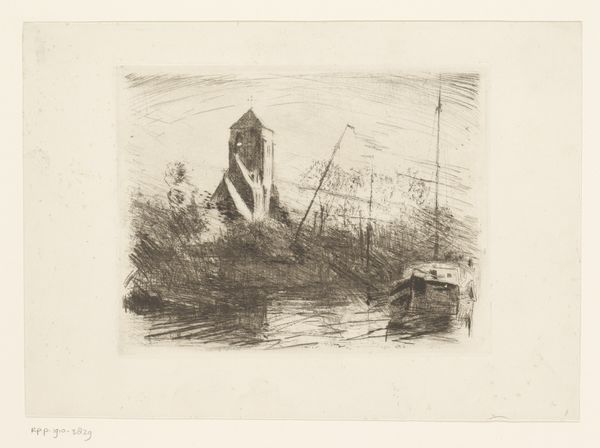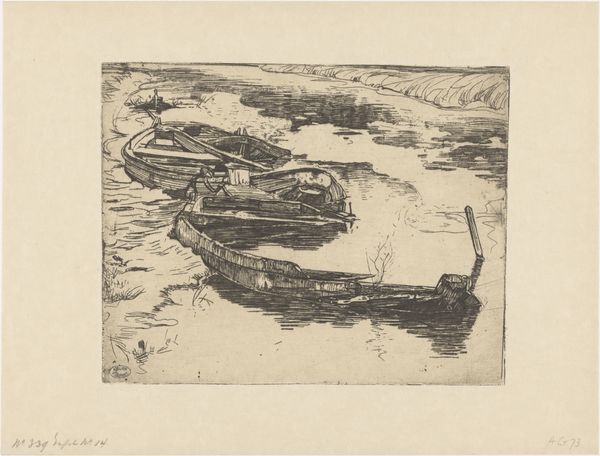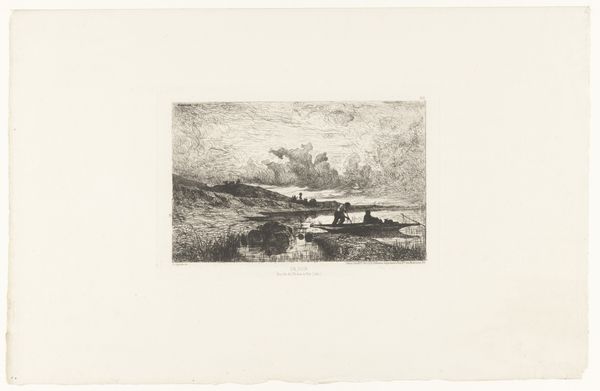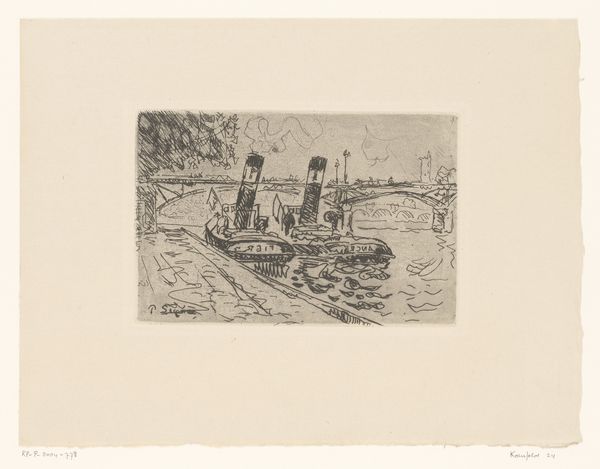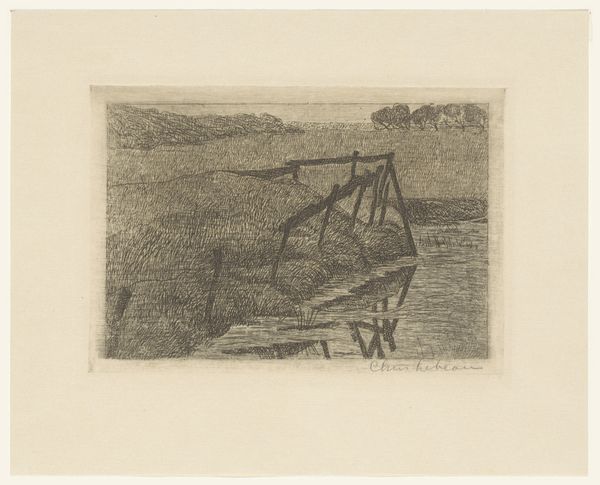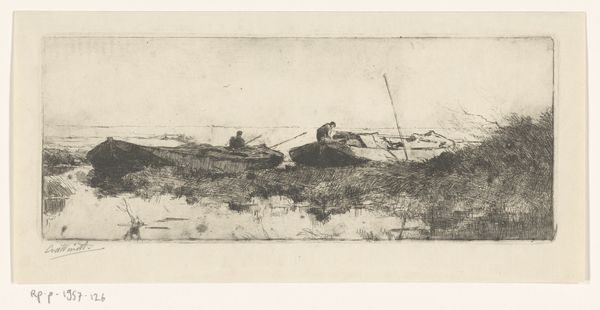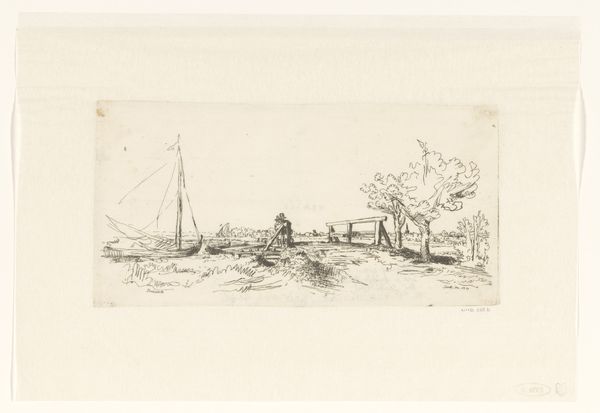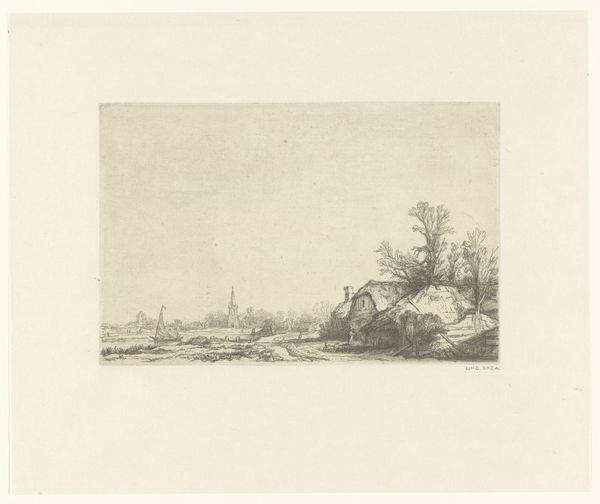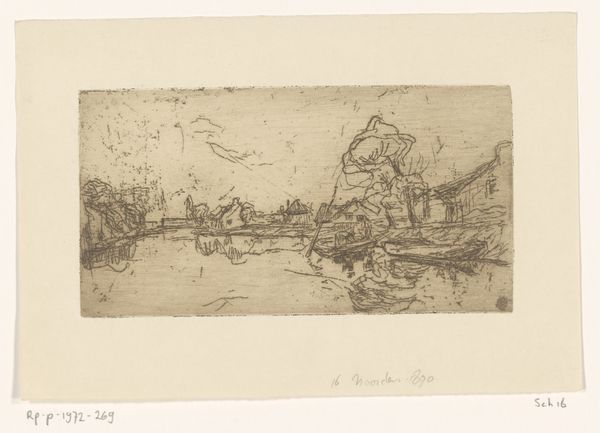
drawing, print, etching
#
drawing
# print
#
pen sketch
#
etching
#
pencil sketch
#
landscape
Dimensions: height 85 mm, width 115 mm
Copyright: Rijks Museum: Open Domain
Editor: This pen and pencil sketch, or perhaps it’s an etching – anyway, this work, "Polderlandschap met twee mannen op een boot" by Albertus Brondgeest, likely created sometime between 1796 and 1849, has a strangely calming effect, even though the lines are so busy. What jumps out at you when you look at this piece? Curator: For me, it is an incredibly telling slice of 19th-century Dutch life. The polder landscape itself speaks to a nation defined by its relationship to water – the constant battle and negotiation with the sea and the land it shapes. Think about the political and social investment required to maintain these landscapes; it’s all embedded in this image. Editor: So, the landscape isn’t just pretty, it represents something? Curator: Absolutely. Look closer at the two men in the boat. Their activity – presumably fishing – represents sustenance, livelihood. In many ways this depicts a romantic view of rural labour that was gaining traction as cities industrialized and became centers of cultural and economic life. The artwork’s existence as both drawing and print also reveals the rise of print culture at the time, art becoming more accessible. Does that change how you see it? Editor: It does, actually. I was just appreciating the aesthetic, but it’s so much more layered when you consider the context. Knowing it’s a print, makes me consider a larger audience viewing and maybe idealizing it. It feels a bit like propaganda? Curator: Not quite propaganda, perhaps, but certainly a curated view of Dutch identity. Remember that national identity and artistic movements were growing together at that time. A drawing, multiplied through prints, democratizing and shaping that identity. Editor: That’s really interesting. It shows you can’t really separate the art from its history. Thanks, I’ll never look at landscapes the same way again!
Comments
No comments
Be the first to comment and join the conversation on the ultimate creative platform.
